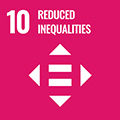- Docente: Claudia Sebastiana Nobili
- Credits: 6
- SSD: L-FIL-LET/10
- Language: Italian
- Teaching Mode: Traditional lectures
- Campus: Ravenna
- Corso: Second cycle degree programme (LM) in Library and Archive Science (cod. 9077)
Learning outcomes
At the end of the course, students should know the most important problems about italian literary manuscripts, from the Middle Age to the XX century. They will be able to discuss authors and texts, to put them in historical perspective, and to improve their cultural competency about reading, copying and publishing the literary manuscripts of the italian tradition.
Course contents
Part 1.The literary manuscripts: production and transmission.
Part 2.Techniques of conservation and edition: an introduction to italian philology.
Readings/Bibliography
a.Part 1
Alfredo Stussi, Introduzione agli studi di filologia italiana, Bologna, Il Mulino, 2015 (1983).
or:
Pasquale Stoppelli, Filologia della letteratura italiana, Roma, Carocci, 2019.
b.Part 2
Slides and notes from the lessons will be procured online, at the end of the course, on the website www.unibo.it (IOL).
N.B. Students that don't attend the lectures must also read the two following texts:
Paola Italia, Editing Novecento, Roma-Napoli, Salerno editrice, 2013.
Alberto Varvaro, Prima lezione di filologia, Bari, Laterza, 2012.
Teaching methods
The lectures will focus on general problems concerning italian philology. In the second part of the course, we will read and analyze some exemplary italian text.
Assessment methods
The oral exam will concern the most important problems and authors of the italian manuscripts presented in the teacher's lectures, and analysed in the recommended readings. Part 1: italian philology. Part 2: exemplary texts: production, transmission and edition.
Teaching tools
Slides
CD
DVD
Office hours
See the website of Claudia Sebastiana Nobili
SDGs


This teaching activity contributes to the achievement of the Sustainable Development Goals of the UN 2030 Agenda.
